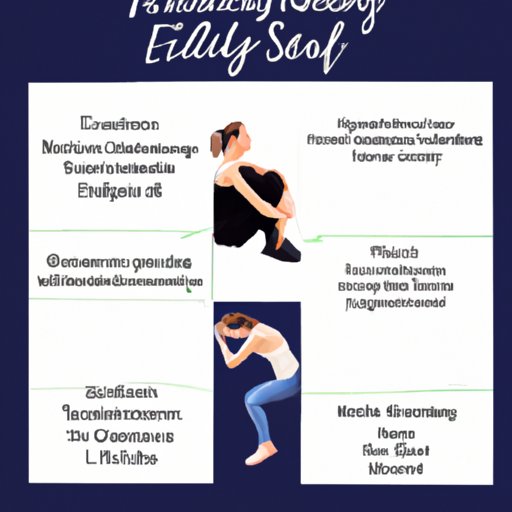Introduction
Codependency is a pattern of behavior in which an individual seeks validation and approval from another person, often to the detriment of their own mental health and well-being. It can manifest as an unhealthy reliance on relationships to fill emotional needs, difficulty setting boundaries, and a fear of abandonment. While codependency is typically associated with romantic relationships, it can also occur in family dynamics, friendships, and other types of relationships.
Set Boundaries
The first step in overcoming codependency is to establish and maintain healthy boundaries in relationships. This means recognizing your rights as an individual and understanding that you don’t have to put someone else’s needs before your own. It’s important to be able to say “no” when necessary and to recognize when someone is trying to take advantage of you.
According to therapist Kim Chronister, “Healthy boundaries allow us to take responsibility for our own emotions, behaviors, and choices without expecting someone else to do it for us.” Establishing boundaries can also help prevent codependent patterns of behavior from reemerging in future relationships.
Develop Healthy Habits
In order to break free from codependency, it’s essential to focus on developing healthy habits and practices. This includes taking time for yourself to rest and recharge, exercising regularly, eating nutritious meals, and engaging in activities that bring joy and satisfaction. Incorporating these habits into your daily routine can help you feel more empowered and in control of your life.
Psychotherapist Maud Purcell explains, “It’s important to make sure we’re taking care of ourselves so we can be strong and centered enough to set boundaries and take responsibility for our own happiness.” When we prioritize our own needs, we can better connect to our true selves and create healthier relationships.
Acknowledge Feelings
Another important step in overcoming codependency is learning to recognize and validate your own feelings. Instead of denying or suppressing them, allow yourself to experience them fully and practice expressing them in a safe and healthy manner. This could include talking to a trusted friend or writing down your thoughts in a journal.
As Dr. Margaret Paul explains, “When we acknowledge our feelings without judging them or ourselves, we are able to let go of the need to control others or to be controlled by them.” Learning to accept and express your emotions can help you move forward in a healthier way.
Practice Self-Awareness
Self-awareness is key to breaking free from codependency. Take the time to reflect on your thoughts, feelings, and behaviors and examine how they are affecting your relationships. Ask yourself if you are being honest and open with your partner or if you are trying to control their actions and decisions. Recognizing the patterns of codependency in yourself can help you identify and address them in a constructive way.
Psychologist Ann Smith suggests, “Being self-aware helps us stay connected to our true selves and to recognize when we are in danger of slipping back into old patterns of codependency.” With increased self-awareness, we can make conscious choices to create healthier relationships.
Seek Professional Help
If you are struggling to overcome codependency on your own, consider seeing a therapist or counselor who specializes in this issue. Professional treatment can help you gain insight into the root causes of your codependency, develop effective coping skills, and learn new ways of relating to others. It can also provide a safe space to explore and process difficult emotions.
Licensed therapist Josephine Neher notes, “Therapy can give you the tools to understand and manage codependent patterns in relationships. With the guidance of a professional, you can begin to heal and move forward in a healthier way.” Seeking professional help can be an invaluable resource in your recovery process.
Find Healthy Support
Surrounding yourself with people who are supportive and encouraging can be a powerful tool in overcoming codependency. Look for friends and family members who will lift you up and remind you of your worth and potential. Avoid toxic situations that trigger codependent behaviors, such as engaging in negative self-talk or putting up with abuse.
As psychotherapist Amy McManus advises, “It’s important to find people who will listen to and validate your thoughts and feelings without judgment. Having a strong support system can help you build confidence and resilience.” Connecting with positive people can be a valuable source of strength and comfort.
Prioritize Self-Care
Above all, it’s important to make self-care a priority. Make time for activities that bring you joy, such as reading, listening to music, or spending time in nature. Practice positive affirmations to boost your self-esteem and foster feelings of self-love. Remind yourself of your worth and potential, and celebrate even small successes.
Psychotherapist Rachel Allyn explains, “Self-care is essential for breaking free from codependency. It helps us recognize our own needs and gives us the strength to set boundaries and create healthier relationships.” Taking care of yourself is the foundation of creating meaningful connections with others.
Conclusion
Codependency can be a difficult pattern to break, but it is possible to overcome it with dedication and effort. Practicing self-care, acknowledging feelings, and setting boundaries are essential steps in the recovery process. Additionally, seeking professional help and surrounding yourself with supportive people can be invaluable resources in your journey towards healing and growth.
(Note: Is this article not meeting your expectations? Do you have knowledge or insights to share? Unlock new opportunities and expand your reach by joining our authors team. Click Registration to join us and share your expertise with our readers.)
